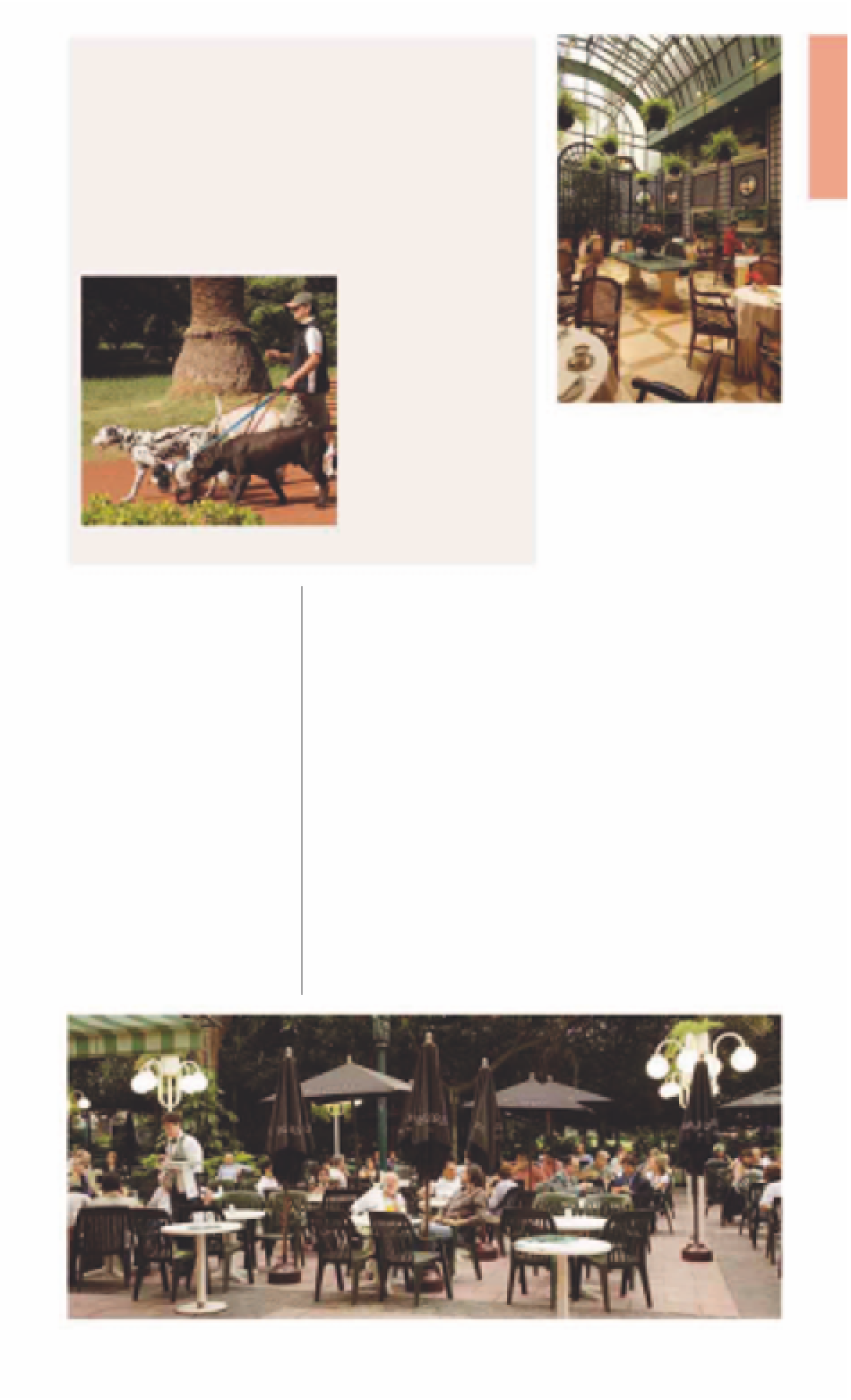Travel Reference
In-Depth Information
The Dogs of Recoleta
It is common for wealthy Recoleta families, living in an apartment
without the required open space, to hire a
paseador
(a professional
dog-walker). Since it became fashionable during the 1970s to own a
pure-breed mutt - huskies, chows, and rare breeds are particularly
desirable - wealthier porteño families have paid a young, usually
male, person to walk their dog. There is great demand for the service,
and every employee will happily walk between ten and 25 dogs,
looking rather like a maypole at the center of dancing, dueling, and
occasionally knotting, ribbons. Recoleta's wide, green spaces and
Palermo's lovely Parque
3 de Febrero are the
preferred rest stops, as
they are located close to
the dogs' palatial homes
and are ideal for a run in
the open. Unfortunately,
there is little control of dog
dirt and, since the scoops
are shunned by walkers
and well-to-do owners
alike, visitors should check
carefully before sitting and
spreading their picnic on
the grass.
The glass-roofed L'Orangerie restaurant,
Alvear Palace Hotel
luxury hotel has modernized
its facilities by adding a spa
and keeping its restaurants at
the cutting edge of culinary
fashion. Fortunately this has
been done without losing any
of its romance or sacrificing the
impeccable personal service
that the richest and most
powerful visitors to the city
expect. Over the years, these
guests have included Spanish
kings, Japanese emperors, and
American presidents, as well
as just about every journalist
and media boss from all around
the world.
The bars and restaurants are
popular and open to the public.
The most pleasant is the lovely
glass-roofed L'Orangerie, where
guests can indulge in a lavish
breakfast spread out beneath
the streaming rays of the
morning sun. Also highly rated
is the La Bourgogne restaurant.
A busy afternoon for a local walker
5
Alvear Palace
Hotel
Ave Alvear 1891.
City Map
3 D2.
Te l
(011) 4808-2100.
@
67, 93, 130.
7
-
=
∑
alvearpalace.com
perhaps for the tentacle-like
branches of the ancient gum
tree that cast a cool, leafy shade.
Super-efficient waiters come
and go, carrying weighty silver
trays of
masitas
(fine pastries)
and perfectly machined cups of
espresso. There has been a café
on this corner since the early
1850s but La Biela became what
it is today during the 1950s,
when racing-car drivers met
here for their post-race drinks.
Monochrome photographs
hanging on the inside walls hark
back to this period. Nowadays it
is a favorite for people-watchers,
wealthy tourists, and artists who
moved into Recoleta before
estate prices skyrocketed.
Built in 1923, the Alvear is
considered by many to be
Buenos Aires's only truly grand
hotel
(see p279)
. Occupying a
city block where the British
Embassy used to stand, the
grand 16-floor building (five of
them are subterranean) is a
monument to Francophilia
both inside and out. It is a
lasting emblem of the city's
aspiration to be seen as the
“Paris of South America.” This
Visitors enjoying cofee on the terrace of the bustling Café La Biela


































